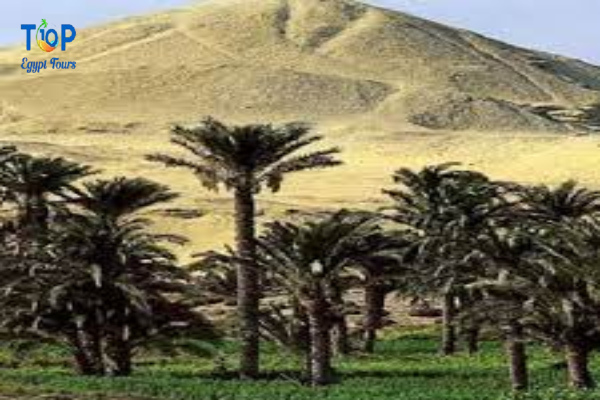The city of Ahnasia, located west of Beni Suef, is one of the most significant cities in the governorate. Once the capital of Egypt during the Ninth and Tenth Dynasties, it held this prestigious status for over two centuries, from 2242 to 2452 BC.
In this article, we will uncover for you the city of Ahnasia with Top Ten Egypt
The Archaeological Wonders of Bahnasia
Spanning an impressive 390 acres, the archaeological area of Bahnasia offers a treasure trove of historical landmarks:
- Temple of King Ramesses II: The site boasts the remains of a grand temple built by Ramesses II, including two statues of the king made of quartz. The temple featured:
- Two massive statues at its entrance.
- A hall with double columns adorned with palm leaf motifs.
- Inner halls leading deeper into the temple.
During the Twenty-Third Dynasty, parts of the temple were reconstructed, with further renovations occurring in the Greco-Roman period.
Discoveries from the Roman and Greek Eras
The area also revealed significant artifacts from other historical periods:
- Roman Temple and Cemetery: Excavations uncovered a Roman-era temple and a cemetery from the Late Period containing statues, canopic jars, and ushabti figurines.
- Greek-Era Basilica: A temple known as “the Basilica” was found, dating back to the Greek era. Its remnants include four striking red granite columns.
Coptic Heritage in city of Ahnasia
Beyond its Pharaonic and Greco-Roman history, Ahnasia is home to notable Coptic sites, such as the Hammam Monastery.
- Hammam Monastery: Dating back to the fourth century AD, this monastery is attributed to Saint Abu Ishaq. It features:
- A spacious basin.
- A main structure dedicated to the Virgin Mary.
- Another structure honoring Saint George.
Ahnasia: A Timeless Journey
Ahnasia invites visitors to step back in time and experience its rich history, vibrant culture, and remarkable heritage. Whether you’re exploring ancient temples or marveling at Coptic monasteries, this city offers a unique tapestry of unforgettable experiences.
Experience the wonders of Egypt with our exclusive tours Click Here!



Comment (0)